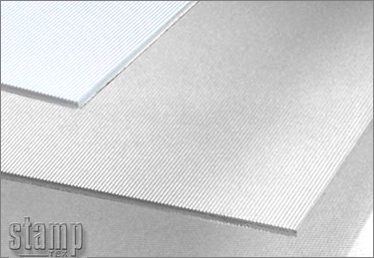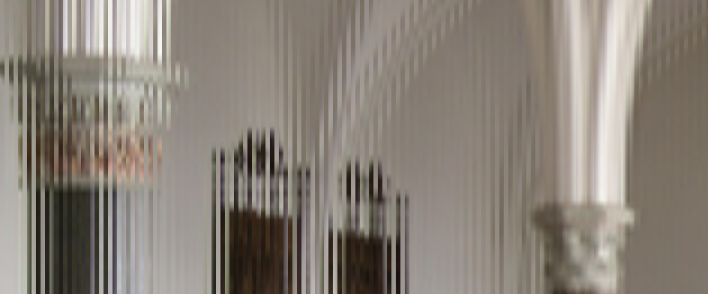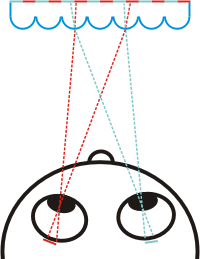5.2.5 Lenticular screen
This method is based on the idea of combining the device for separation of stereo pairs with the image media. It allows one or several viewers to see a stereo effect as though without additional devices.
Professor Gabriel Ionas Lippmann (1845-1921) from the Paris University suggested to use an optic lenticular screen to create stereo images. Maurice Bonnet, a French photographer and inventor, managed to realize this idea in practice first. He developed a technique and a special camera for multi-frame shooting.
The principle of producing stereo image with lenticular screen is based on the following: an image that has been prepared in a special way (let us call it encoded) is covered with a plastic film (or plate) the front surface of which consists of a great number of parallel cylindrical lenses (Fig. 20). These lenses usually have a small width that is invisible to the viewer.

Fig. 20. Lenticular screen (picture from www.stamptex.pl)
The encoding of images in a stereo pair means “cutting” the source images into thin stripes and mixing them in such a way that a pair of stripes is located under each lens: one from the left image and the other from the right one. Preparing an encoded image was a difficult task for a long time and it required special equipment and skills. Currently this operation can be carried out with the help of the computer, which makes the process of making a high quality lenticular stereo image much easier. In Fig. 21, you can see a zoomed part of the encoded image of the stereo pair shown in Fig. 14.

Fig. 21. Part of an encoded image
Light reflected by an encoded image passes through lenses and thus gets separated in such a way that the left eye of the viewer sees a left part of a stereo image, while the right eye sees a right part (Fig. 22).

Fig. 22. The diagram showing how the encoded image of a stereo pair is separated by a lenticular screen. The left image is shown as red and the right image is shown as blue.
The strongest effect of the lenticular stereography can be achieved if encoding not two images of a stereo pair, but a few additional images from between them (for example, 12images). In this case, a large stereovision zone appears, moving in which the viewer sees frames changing in turns. That creates the effect of looking around. It becomes possible to take a look behind the objects of the foreground. It makes being viewed stereo image looking natural.
You can also use lenticular screen to create various "animated" images. If you encode different images (e.g. a sequence of frames from a cartoon), the lenticular screen will show different images while you are viewing the image from different angles. Thus, you can play a sequence of images by smoothly changing the viewing angle.